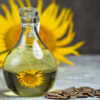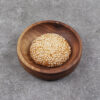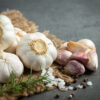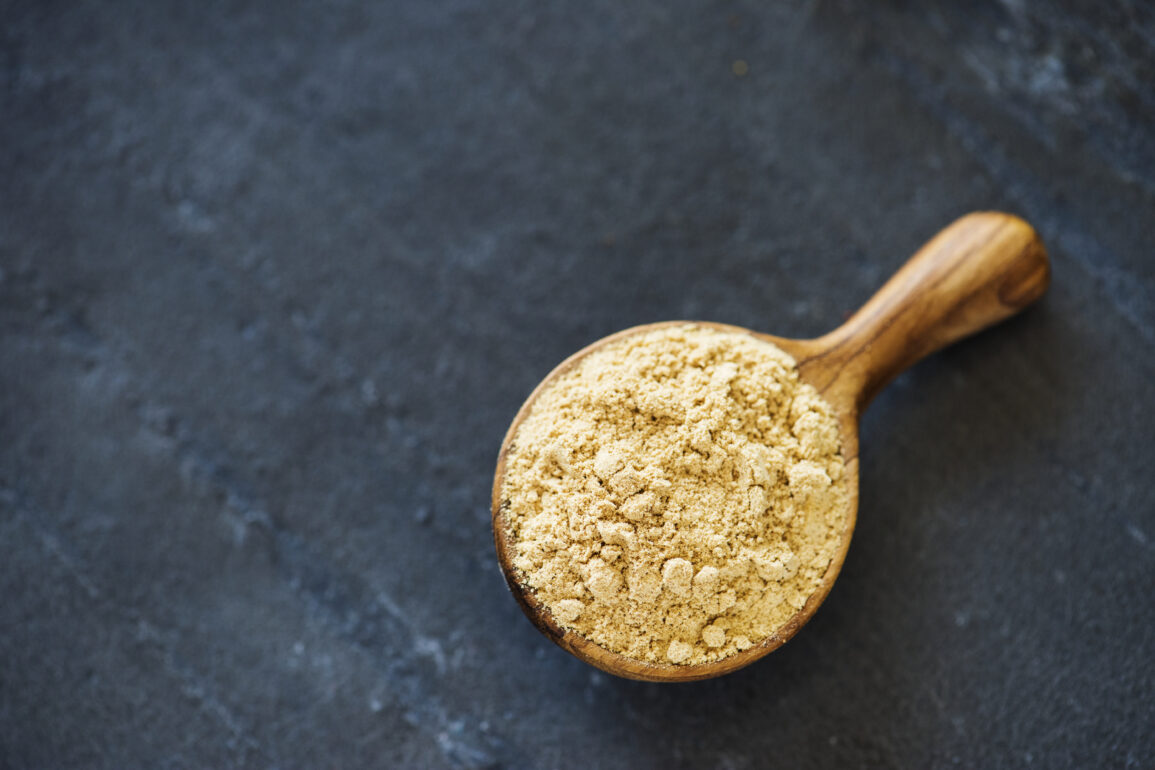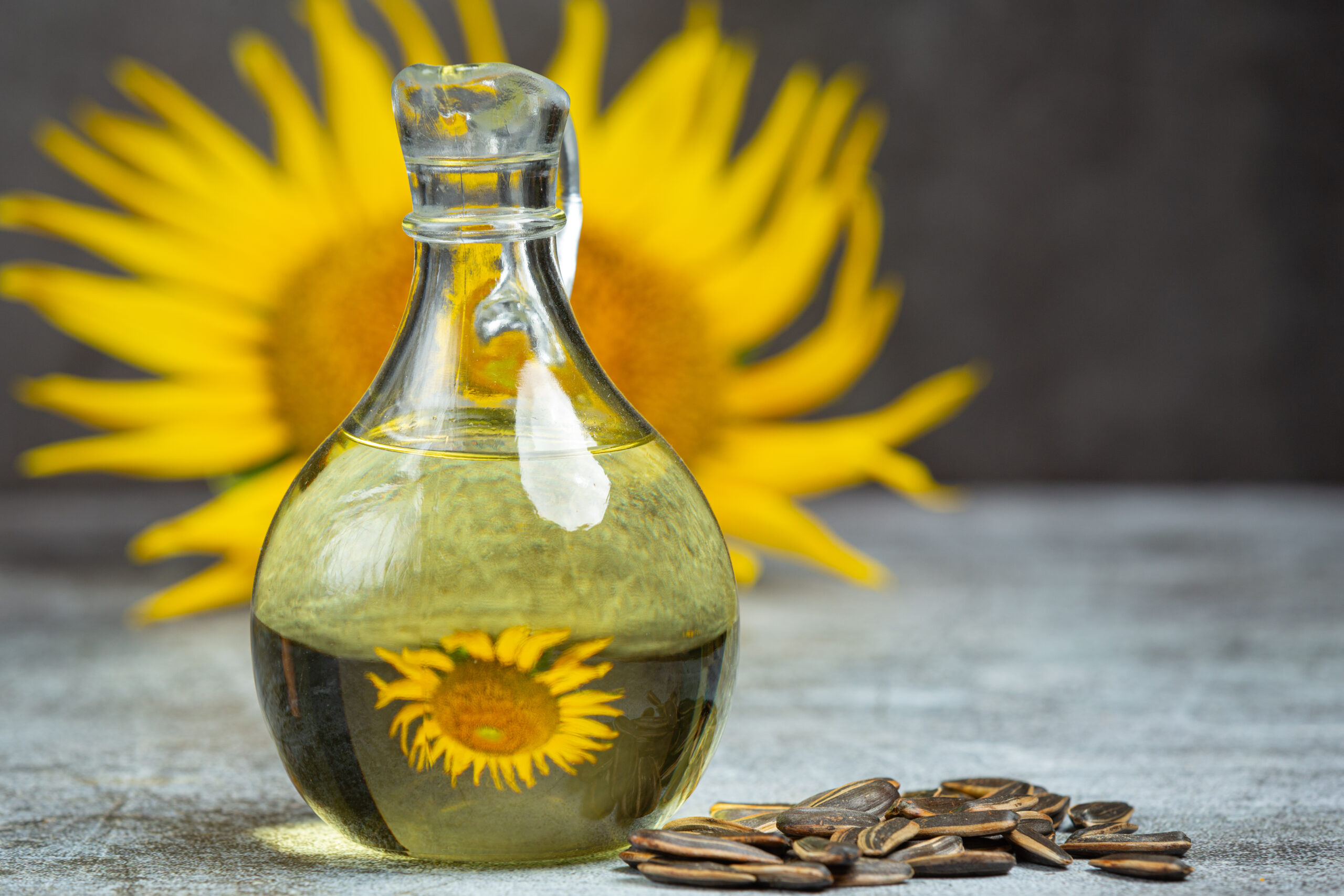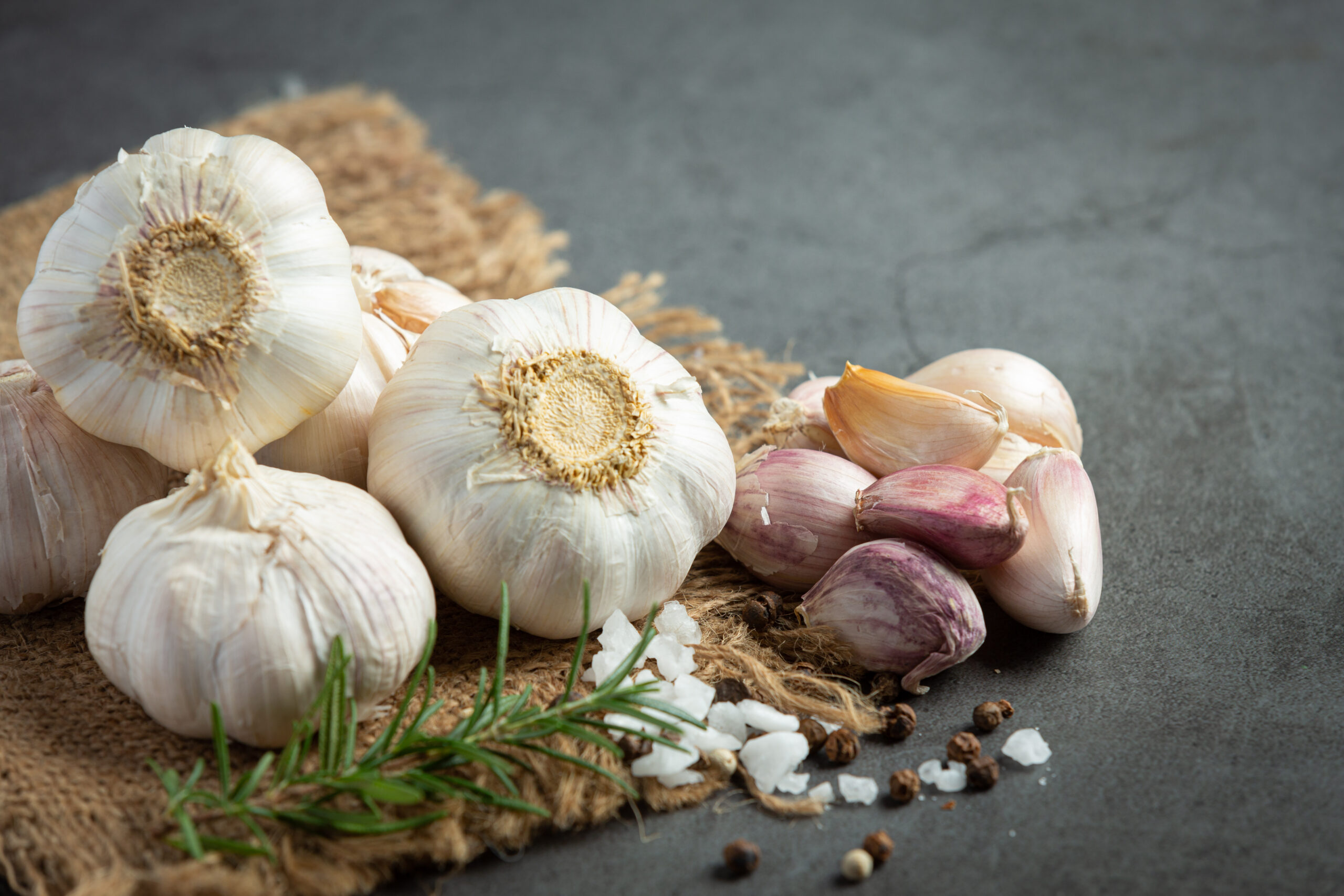Introduction to Sandalwood Powder Lightening
What is Sandalwood Powder?
Sandalwood powder is more than just a fragrant, exotic spice found in ancient beauty rituals it’s a powerhouse natural ingredient that has stood the test of time. Derived from the heartwood of the sandalwood tree, this fine, beige-colored powder carries a calming scent and a treasure trove of skin-loving benefits. Among its most revered properties? Skin lightening. For centuries, people across Asia and the Middle East have used sandalwood powder to brighten their complexions, reduce dark spots, and achieve a radiant, even skin tone all without the harsh side effects of chemical products.
What makes sandalwood powder so special isn’t just its luxurious scent or historical prestige. It’s packed with compounds like santalol and beta-santalene, which give it powerful anti-inflammatory, antioxidant, and skin-brightening abilities. This gentle yet effective remedy works on all skin types and is widely recognized in Ayurvedic medicine for calming acne, reducing blemishes, and naturally improving skin tone.
Sandalwood’s legacy dates back thousands of years. In ancient Indian Ayurvedic texts, it was known as “Chandana” and was treasured not just for its spiritual value but for its role in skin purification. Queens, kings, and sages used sandalwood pastes for rituals, spiritual purification, and as a daily skincare essential. In Egypt, it was used in embalming rituals, while in China, it held a place in medicine and wellness routines.
In traditional Hindu and Buddhist cultures, sandalwood powder was often applied before prayers or ceremonies, not just to cool the skin but to spiritually “cleanse” it. This holistic approach—treating skin, mind, and spirit—remains part of its charm today.
History of Sandalwood Powder Lightening
Modern skincare brands now echo these traditions, blending sandalwood with contemporary actives, but the heart of it remains the same: a gentle, natural lightener rooted in ancient wisdom.
Why Use Sandalwood Powder for Skin Lightening?
In a world overloaded with synthetic lightening creams, bleaches, and chemical peels, sandalwood powder offers a breath of fresh air. It provides a safe, natural alternative that not only brightens the skin tone but also nurtures the skin barrier. Unlike conventional lightening agents like hydroquinone or kojic acid that can irritate or thin the skin with prolonged use, sandalwood powder does the opposite—it strengthens, hydrates, and protects while gradually working to reduce pigmentation and dark spots.
It’s especially effective for:
- Hyperpigmentation
- Melasma
- Post-acne scars
- Sun tan
- Dull and uneven skin tone
When combined with other natural ingredients like turmeric, aloe vera, and rose water, sandalwood powder becomes a potent treatment for boosting overall complexion, fighting early aging signs, and giving your skin a glow-up without side effects.
Simply put, sandalwood powder lightening is about more than just skin color—it’s about restoring balance, health, and confidence to your skin, naturally.
Science Behind Sandalwood Powder for Skin Lightening
Active Components in Sandalwood
The secret to sandalwood’s skin-lightening ability lies in its chemical structure. One of its primary active components, alpha-santalol, is known for its powerful antioxidant and anti-inflammatory properties. These compounds inhibit the enzymes that lead to melanin overproduction, which is the root cause of hyperpigmentation.
Here are the key bioactive compounds:
- Alpha and beta santalol – anti-inflammatory and antimicrobial
- Tannins – tightens skin, reduces oil production
- Sesquiterpenes – stimulate skin regeneration and detoxification
These natural compounds not only reduce existing pigmentation but also prevent future dark spots by protecting skin from oxidative stress and environmental aggressors.
How Sandalwood Powder Lightening Affects Skin Pigmentation
Melanin is the pigment responsible for the color of your skin. While some melanin is essential, overproduction often triggered by sun exposure, acne scars, or hormonal imbalance leads to dark patches and an uneven complexion.
Sandalwood powder interrupts this cycle by:
- Reducing tyrosinase activity, the enzyme involved in melanin production
- Exfoliating dead skin cells and brightening dull areas
- Calming inflammation that can worsen pigmentation
Over time, this not only lightens dark spots but also improves overall skin clarity and tone.
Research Studies Supporting Skin Lightening Claims
Modern science has started catching up with traditional knowledge. Several studies confirm sandalwood’s efficacy in treating pigmentation and other skin concerns.
In one study published in the Journal of Clinical and Aesthetic Dermatology, topical use of sandalwood extract showed a notable decrease in pigmentation and redness among participants after just 8 weeks.
Another research trial in Phytotherapy Research demonstrated that sandalwood oil inhibited melanin synthesis in cultured melanocytes, supporting its use in hyperpigmentation treatments.
While more large-scale human trials are needed, the initial results are promising—and centuries of anecdotal evidence are hard to ignore.
Benefits of Sandalwood Powder for Skin
Skin Lightening and Brightening
Of all the natural remedies out there, sandalwood powder is one of the most reliable for gentle, safe, and progressive skin lightening. The results won’t be instant—but they will be real. Unlike commercial bleaches, it doesn’t strip your skin but gradually improves tone and texture.
Top lightening benefits include:
- Reduces blemishes and acne marks
- Fades sun tan
- Improves dull and tired skin
- Balances uneven skin tone
It works best when applied regularly 3–4 times a week. Many users begin to see visible changes in tone within 3–6 weeks, especially when supported by SPF and a good skincare routine.
Sandalwood Powder Lightening have Anti-Inflammatory and Antibacterial Properties
Sandalwood is also a skin-soothing marvel. Got red, angry pimples? Rashes? Heat bumps? Sandalwood calms them all.
Its antibacterial benefits help:
- Kill acne-causing bacteria
- Prevent breakouts without over-drying
- Cool inflammation and redness
- Heal small wounds, cuts, or sunburn
It’s this dual nature—both soothing and brightening—that makes it a rare find in skincare.
Anti-Aging and Skin Soothing Effects
Sandalwood’s high antioxidant content plays a huge role in fighting signs of aging. It protects against free radical damage that contributes to:
- Fine lines
- Wrinkles
- Sagging skin
- Uneven tone
It also hydrates dry, flaky areas and restores elasticity. Many people using sandalwood powder long-term report not just lighter skin—but firmer, younger-looking skin, too.
Different Types of Sandalwood Powder
White vs Red Sandalwood Powder
There are two main types of sandalwood used in skincare:
| Type | Color | Best For | Effect on Skin |
|---|---|---|---|
| White Sandalwood | Pale beige | Lightening, cooling, anti-aging | Brightening and soothing |
| Red Sandalwood | Deep red | Acne, blemishes, oil control | Antibacterial and exfoliating |
If your goal is to lighten skin, white sandalwood powder is the better option. Red sandalwood is more commonly used for treating acne and oily skin but doesn’t have strong lightening properties.
Organic vs Commercial Sandalwood Powder
The source of your sandalwood powder matters—a lot.
- Organic Sandalwood Powder: Typically made from real sandalwood trees, free from additives and chemicals. It’s costlier but far more effective.
- Commercial Versions: Often mixed with talc, artificial fragrance, or bleached wood powder. These can be harmful and less effective.
Always look for powders labeled:
- “100% pure”
- “Food-grade or therapeutic grade”
- “No synthetic color or perfume”
How to Choose the Right Sandalwood Powder
To get the best lightening results:
- Choose white sandalwood powder
- Look for Ayurvedic certifications or organic labels
- Read reviews and check source country—Indian sandalwood (Santalum album) is considered the highest quality
- Avoid “fragranced sandalwood powder”—it’s often synthetic
Using high-quality sandalwood means better results, faster outcomes, and less risk of irritation.
DIY Sandalwood Face Packs for Lightening
Sandalwood and Rose Water Pack
This classic combo is perfect for oily and combination skin. Rose water cools and tones, while sandalwood brightens and calms.
Ingredients:
- 1 tbsp sandalwood powder
- 2 tbsp rose water
Instructions:
- Mix until smooth
- Apply to face and neck
- Leave for 15–20 minutes
- Rinse with lukewarm water
Use 3–4 times a week for radiant, oil-free skin.
Sandalwood and Turmeric Pack
Great for pigmentation and acne marks.
Ingredients:
- 1 tbsp sandalwood powder
- ½ tsp turmeric
- 1 tbsp milk or yogurt
Apply evenly and rinse after 20 minutes. Turmeric adds an extra anti-inflammatory kick.
Sandalwood and Aloe Vera Pack
Best for sensitive or sun-damaged skin.
Ingredients:
- 1 tbsp sandalwood powder
- 2 tbsp fresh aloe vera gel
Cool, calm, and restore your skin. Use twice weekly for healing and hydration.
Application Methods for Best Results
Daily Skincare Routine Using Sandalwood Powder
Sandalwood powder lightening can be a valuable addition to your daily skincare routine if done correctly. Think of it not as a treatment, but as a way of life. Regular, disciplined use allows your skin to benefit gradually and holistically.
Morning Routine:
- Cleanser: Use a gentle, pH-balanced face wash to remove dirt.
- Exfoliation (2–3x a week): Mix sandalwood powder with honey and apply for 10 minutes. This gently buffs away dead skin cells.
- Toner: Spritz rose water or witch hazel.
- Moisturizer with SPF: Always follow with sunscreen, as brightening ingredients increase UV sensitivity.
Evening Routine:
- Cleanser: Remove makeup and impurities.
- Face Pack (3–4x a week): Use a sandalwood and milk mixture for nourishment.
- Serum or Treatment: Apply vitamin C or niacinamide serum to boost the lightening effect.
- Moisturizer: Hydrate your skin with a non-comedogenic moisturizer.
This routine not only helps with skin lightening but also addresses texture, hydration, and premature aging. Make sandalwood your skin’s best friend, and you’ll notice a visible glow in a few weeks.
How to Mix Sandalwood Powder Properly
To get the best out of sandalwood powder, the preparation process is key. The way you mix it affects how well it spreads, absorbs, and performs.
Basic Mixing Guide:
| Purpose | Mix With | Ratio |
|---|---|---|
| Brightening | Rose water | 1 tbsp powder + 2 tsp water |
| Anti-acne | Aloe vera gel | 1 tbsp + 1 tbsp aloe gel |
| Hydration | Honey + milk | 1 tbsp + 1 tsp honey + milk |
| Anti-pigmentation | Lemon juice (careful) | 1 tbsp + few drops lemon |
Instructions:
- Always use a wooden or ceramic spoon (metal can react with actives).
- Blend until a creamy, non-drippy paste forms.
- Apply with clean fingers or a flat brush.
- Wait until slightly dry—not cracked—then rinse with lukewarm water.
- Moisturize afterward.
Pro Tip: Never store premixed paste; make fresh for each use. This preserves the active compounds and ensures no bacterial growth.
Dos and Don’ts of Sandalwood Powder Usage
Do’s:
- Do a patch test before full use, especially on sensitive skin.
- Do mix with calming agents like aloe or yogurt.
- Do store sandalwood powder in an airtight, dry container.
- Do apply sunscreen daily—even if indoors.
- Do cleanse skin thoroughly before applying any face pack.
Don’ts:
- Don’t leave masks on for too long—it may dry out your skin.
- Don’t mix with alcohol-based toners or harsh acids.
- Don’t use near the eye area—the skin is too delicate.
- Don’t apply if your skin has open wounds or eczema.
- Don’t use metal containers or spoons when mixing.
Follow these, and you’ll avoid irritation, maximize results, and maintain a glowing, healthy complexion.
Comparative Table: Sandalwood Powder vs Other Natural Lightening Agents
Let’s look at how sandalwood powder stands next to other popular natural skin-lightening ingredients:
| Ingredient | Lightening Effect | Anti-Acne | Hydrating | Anti-Aging | Skin Type Compatibility |
|---|---|---|---|---|---|
| Sandalwood Powder | ✅✅✅ | ✅✅✅ | ✅ | ✅✅ | All |
| Turmeric | ✅✅ | ✅✅✅ | ❌ | ✅ | Oily/Combo |
| Lemon Juice | ✅✅✅ | ❌ | ❌ | ✅ | Oily |
| Aloe Vera | ✅ | ✅✅ | ✅✅✅ | ✅✅ | Sensitive/Dry |
| Licorice Root | ✅✅✅ | ✅ | ✅ | ✅✅ | All |
| Potato Juice | ✅✅ | ❌ | ✅ | ❌ | Combo/Normal |
While each has its merits, Sandalwood Powder Lightening ranks highest overall in versatility, gentleness, and long-term effectiveness—especially when looking for safe and sustained lightening without side effects.
Advantages and Disadvantages of Sandalwood Powder Lightening for Skin
Advantages of Using Sandalwood Powder Lightening
Let’s break down the benefits:
- Gentle Lightening: Doesn’t bleach but rather restores natural glow over time.
- No Harsh Chemicals: 100% natural and safe for long-term use.
- Reduces Tan and Pigmentation: Fades sun damage and evens skin tone.
- Fights Acne and Inflammation: Soothes red, irritated skin.
- Slows Aging: Antioxidants help protect skin from wrinkles and fine lines.
- Safe for Daily Skincare: Non-toxic and usable on face, neck, hands.
- Cost-Effective: A small amount goes a long way.
Disadvantages and Limitations to Consider
Like all skincare, sandalwood powder has its drawbacks:
- Slow Results: It’s not a quick fix—expect visible changes after 3–6 weeks.
- Dryness Risk: Overuse can dry out your skin, especially if used with lemon.
- Allergic Reactions: Rare but possible—always do a patch test.
- Difficult to Source Pure Versions: Many market powders are adulterated.
- Staining Risk: Can temporarily stain light fabrics or nails.
- Not for Broken Skin: Avoid use on open acne or cuts.
By understanding both sides, you’ll know exactly what to expect and how to use sandalwood responsibly and effectively.
Who Should Use Sandalwood Powder for Lightening?
Ideal Skin Types and Conditions
The beauty of sandalwood is its adaptability. It suits almost all skin types with the right blend:
- Oily Skin: Combats breakouts and regulates excess oil.
- Dry Skin: Combine with milk or honey for added moisture.
- Combination Skin: Balances oiliness while hydrating dry patches.
- Sensitive Skin: Use with aloe vera or cucumber juice to soothe irritation.
- Aging Skin: Its antioxidants rejuvenate and firm mature skin.
Best for skin conditions such as:
- Uneven skin tone
- Acne scars
- Tanning and sunburn
- Dullness and tired skin
Who Should Be Cautious?
- Extremely dry or flaky skin users (unless mixed with a hydrating base)
- Those with sandalwood allergies (patch test is non-negotiable)
Age Groups That Can Benefit the Most
Sandalwood powder lightening isn’t just for those fighting signs of aging. It can serve various age brackets uniquely:
- Teens: Helps with acne, oil control, and early pigmentation.
- 20s and 30s: Repairs sun damage and prevents early aging.
- 40s and 50s: Brightens and firms mature skin.
- 50+: Soothes age spots, provides glow, and helps with elasticity.
From your first breakout to your first wrinkle, sandalwood grows with your skincare journey.
Commercial Sandalwood Products vs. DIY Sandalwood Powder
Reviewing Store-Bought Sandalwood-Based Products
The market is flooded with commercial skincare products that promise to offer the benefits of sandalwood. From face washes and toners to creams and face packs, sandalwood has made its way into the skincare aisle of almost every beauty brand.
Advantages of Store-Bought Sandalwood Products:
- Convenience: No need for preparation or cleanup.
- Long Shelf Life: Preserved for months or even years.
- Blended Formulas: Often include additional active ingredients like vitamin C, niacinamide, or glycerin.
- User-Friendly: Ideal for travel or on-the-go routines.
Disadvantages:
- Low Concentration: Many products contain only trace amounts of real sandalwood.
- Additives and Preservatives: Some contain alcohol, synthetic fragrance, and parabens.
- Expensive: You pay more for packaging and branding than the actual ingredient.
When buying store-bought products, always check the ingredient list and look for:
- “Santalum Album” or “White Sandalwood”
- No parabens or sulfates
- Dermatologically tested or Ayurvedic certification
Popular Product Examples:
- Forest Essentials Sandalwood and Saffron Night Cream
- Biotique Sandalwood Sunscreen Lotion
- Khadi Natural Sandalwood Face Pack
While these offer convenience, they often pale in comparison to the effectiveness of pure, DIY sandalwood powder.
Why DIY Sandalwood Powder Still Reigns Supreme
When it comes to purity, potency, and control, DIY is hands-down superior. Here’s why beauty purists and natural skincare lovers swear by it:
- Customizable: You can adapt recipes to suit your skin needs.
- Zero Chemicals: No artificial preservatives or fragrances.
- Freshness: You’re always working with a fresh, activated paste.
- Cost-Effective: A 100g packet can last for months.
However, DIY also has its own challenges:
- It requires time and effort to mix and apply.
- There’s always a risk of inconsistency if your mix isn’t accurate.
- Finding authentic, unadulterated sandalwood powder can be tough.
Still, if you’re in it for long-term skin health and serious results, DIY is the better route.
Incorporating Sandalwood Powder Lightening into a Holistic Routine
Pairing with Diet and Hydration
Topical application of sandalwood powder works best when supported by internal wellness. If your body lacks hydration or nutrients, no amount of face packs will give lasting results.
Skincare-Boosting Foods:
- Vitamin C-rich fruits: Oranges, kiwi, guava help repair skin damage.
- Omega-3 fats: Found in walnuts, chia seeds, and flaxseed—keep skin plump and elastic.
- Zinc-rich foods: Like pumpkin seeds and chickpeas—for acne control.
- Hydrating foods: Cucumber, watermelon, and celery help flush toxins.
Hydration Habits:
- Drink at least 8–10 glasses of water daily
- Add herbal teas like chamomile or spearmint
- Limit caffeine and alcohol—they dehydrate your skin
Think of it this way: your skin is like a plant. Sandalwood is the fertilizer, but water and sunlight (diet + hydration) are just as essential.
Complementary Natural Ingredients
To take your sandalwood lightening routine up a notch, blend it with other powerful naturals:
| Natural Ingredient | Benefit | Best Skin Type | Mixing Ratio |
|---|---|---|---|
| Turmeric | Anti-pigmentation | Oily/Combo | ¼ tsp per tbsp sandalwood |
| Honey | Moisturizing & antibacterial | Dry/Sensitive | 1 tsp per tbsp |
| Aloe Vera | Cooling, soothing | All | 1 tbsp |
| Milk | Brightening & nourishing | Dry | As needed to make paste |
| Cucumber Juice | Reduces puffiness, calms skin | Sensitive | 1 tbsp |
| Rose Water | Toning & hydrating | Oily/Combo | 2 tsp |
Blending sandalwood with these ingredients not only amplifies the results but also helps balance your skin’s needs.
Long-Term Effects and Realistic Expectations
What to Expect After 1, 4, and 8 Weeks of Use
Sandalwood powder lightening delivers results over time, not overnight. Let’s break it down:
Week 1:
- Skin feels smoother and less oily
- Slight reduction in active breakouts
- Mild glow, especially after rinsing the pack
Week 4:
- Blemishes and tan begin to fade
- Skin tone becomes more even
- Rough patches smooth out, especially on cheeks and forehead
Week 8:
- Pigmentation significantly lightened
- Acne marks and scars visibly reduced
- Natural glow and youthful look appear
Stick with it for 2 months minimum to truly judge its effectiveness. Consistency is key.
Side Effects and How to Avoid Them
Though sandalwood is gentle, side effects may occur if not used properly:
Common Side Effects:
- Dryness
- Mild itching or redness
- Increased sun sensitivity
Avoid Side Effects By:
- Always doing a patch test
- Using a moisturizer after rinse
- Applying sunscreen daily
- Not using lemon juice if you have sensitive skin
If any discomfort persists, pause use and consult a dermatologist.
Myths and Facts About Sandalwood Powder Lightening
Debunking Common Misconceptions
There’s a lot of noise around natural skincare. Let’s clear things up:
Myth 1: Sandalwood bleaches your skin.
Fact: It lightens uneven tone and fades spots—not your natural skin color.
Myth 2: The more you apply, the faster it works.
Fact: Overuse causes dryness and irritation. 3–4x a week is ideal.
Myth 3: Sandalwood alone will fix everything.
Fact: It’s powerful, but it works best with a healthy lifestyle and sun protection.
Myth 4: It works the same for everyone.
Fact: Results vary by skin type, age, and consistency.
Myth 5: Commercial sandalwood soaps are just as good.
Fact: Most contain synthetic fragrances and low-quality sandalwood oil.
Cultural Beliefs vs Scientific Truths
Many people revere sandalwood as a sacred and spiritual material. While science doesn’t account for spiritual energy, it does support the skincare benefits.
- Cultural Use: Used before weddings and ceremonies for glowing skin.
- Scientific Support: Proven antibacterial, lightening, and anti-inflammatory properties.
Ancient wisdom and modern science align beautifully here.
Testimonials and Real User Experiences
Case Studies: Real Results From Real People
Let’s explore real-world results from regular sandalwood users:
Riya, 25 – Combination Skin:
Used a sandalwood + rose water mix 4x a week
Result: “Within a month, my skin looked so fresh. Acne marks faded, and I started getting compliments on my glow.”
Zara, 32 – Dry Skin:
Used sandalwood + honey + milk 3x weekly
Result: “Pigmentation from pregnancy lightened by almost 60% in 2 months.”
Imran, 38 – Oily Skin:
Used sandalwood + turmeric + aloe vera gel
Result: “Sandalwood gave me real confidence. It’s natural and effective. My scars are barely noticeable now.”
These are just a few of the thousands of success stories shared across beauty forums and natural skincare groups.
Community Tips and Tricks for Better Results
The online community of sandalwood fans is thriving, and they’ve shared some real gems:
- “Steam your face before applying” – helps with deeper absorption.
- “Store it in a glass jar” – preserves potency better than plastic.
- “Use at night for better repair” – avoids sunlight sensitivity.
- “Add papaya puree once a week” – boosts exfoliation naturally.
These user insights can take your routine to the next level.
Final Thoughts
Is Sandalwood Powder Lightening Right for You?
If you’re someone looking for a gentle, reliable, and natural solution to lighten your skin, then sandalwood powder lightening is absolutely worth trying. Unlike most skin-lightening products that rely on harsh chemicals or instant results, sandalwood takes the scenic route—healing, nourishing, and gradually enhancing your skin tone over time.
Sandalwood isn’t just about reducing melanin or brightening your appearance. It’s about a wholesome skincare journey that blends tradition with science, spirituality with self-care. The process itself—grinding the paste, applying it, waiting in calm—feels almost therapeutic. It’s not just about aesthetics but about aligning your mind, skin, and soul.
Key Takeaways:
- Sandalwood powder is packed with antioxidants, anti-inflammatory, and antibacterial compounds.
- It reduces pigmentation, acne scars, and sun damage without bleaching your skin.
- Best used 3–4 times per week with natural companions like aloe vera, rose water, turmeric, and honey.
- Safe for most skin types and ages—just perform a patch test and follow with SPF.
That said, it’s not a miracle cure. It requires patience, consistency, and care. But if you’re in it for long-lasting glow and healthy skin, sandalwood powder can be one of the most rewarding choices you’ll ever make in your skincare routine.
FAQs About Sandalwood Powder Lightening
Q1: Can I use sandalwood powder daily for faster results?
No, using it every day may dry out your skin. Stick to 3–4 times a week for best results and let your skin rest in between.
Q2: Which type of sandalwood is best for lightening—red or white?
White sandalwood is more effective for lightening and brightening. Red sandalwood is better for acne and oil control.
Q3: How long before I see results with sandalwood powder?
You’ll typically see results in 4–8 weeks with consistent use, depending on your skin type, routine, and other skincare factors.
Q4: Can I mix sandalwood powder with lemon juice?
Yes, but only if you don’t have sensitive skin. Lemon can cause irritation or stinging. Use in small amounts and always patch test.
Q5: Is it safe to use sandalwood powder during pregnancy?
Yes, if it’s pure and used topically. Avoid essential oils unless your doctor approves. Always opt for natural, additive-free powder.

